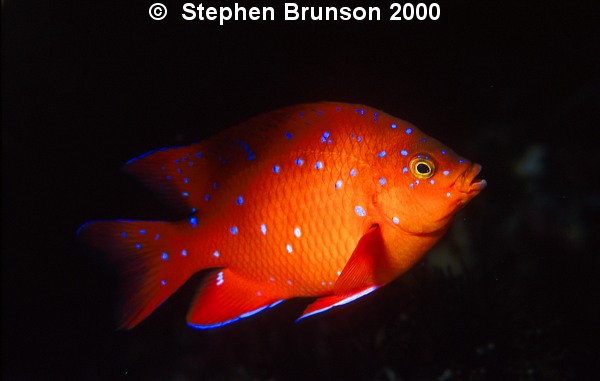








Garibaldi: Hypsypops rubicundus
The Garibaldi, Hypsypops rubicundus, a very territorial fish, is the official fish of the state of California, and is protected by law. It is illegal to catch Garibaldi for sporting or commerical use. It is a member of the damselfish/angelfish family, and exhibits many of the same characteristics of the Emporer Angel, aggressively defending its eggs and feeding grounds. The male, not the female, protects the eggs for the 2-3 weeks before they hatch. The garibaldi juveniles are marked by neon blue spots on the body and lines along the pectoral fins and the tail. Besides being prominent along the California coast, the garibaldi is also very abundant in the Chanel Islands, such as Catalina Island, San Clemente Island, Santa Rosa Island, and San Miguel Island.

Print Number - AF022
Limited Edition signed color photography for sale by Stephen Brunson
Garibaldi, Hypsypops rubicundus Statistics:
Size: Up to 14 Inches
Lifespan: To 17 years or more
Breeding: Garibaldis spawn from March though July
Habitat: Rocky reefs and Kelp forests to 16 fathoms
Diet: Feeds on attached invertebrates and nudibranchs
Distribution: From Monterey Bay, California, to Lower Baja California, including the Chanel Islands off the Southern coast of California
Habit: Very aggressive and very territorial with food and eggs
BrunsonImages@att.net


















